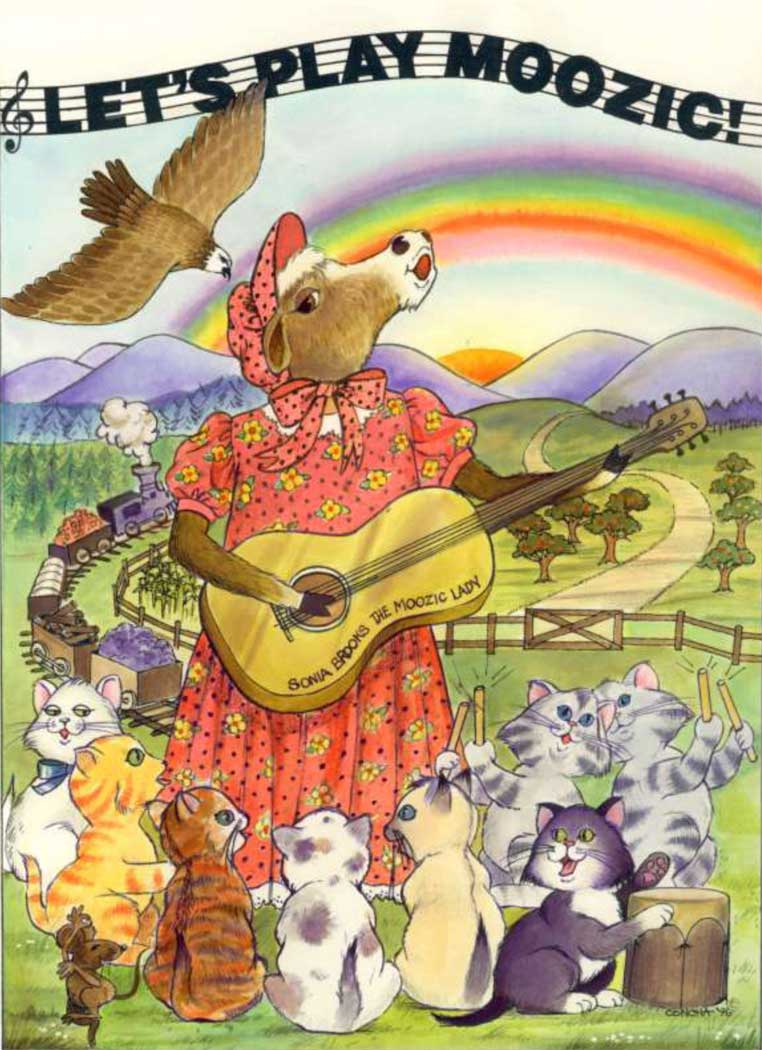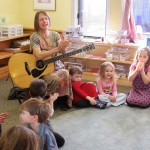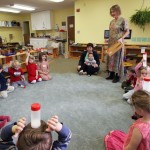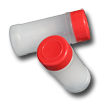
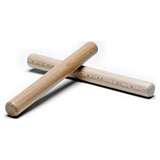
Tap-n-Shake created by Sonia Brooks, is a music method which offers a framework for guiding classrooms of young children in music activities. Designed for use in daycares and preschools, this method guides groups of children through a structured interactive program. Children tap rhythm sticks while singing folk songs and reciting simple poems. They use shakers for creative response and physical movement, such as jumping and stomping, dancing and swaying. The program finishes with a soothing lullaby.
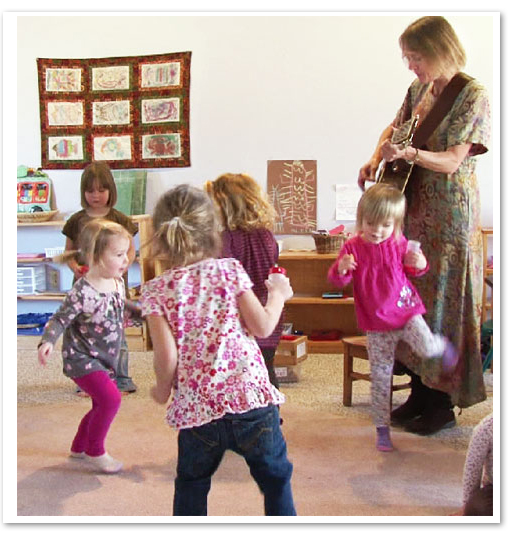
Teachers can implement the program themselves, using songs within the framework of the Tap-n-Shake method. Any songs can be adapted to this method. Or teachers can use the CD, Tap-n-Shake, which features two complete programs recorded live with children. Tap-n-Shake programs are conducted daily, weekly, or bi-monthly within each classroom of a childcare center or preschool.
“Sonia is my music teacher. I am the generalist and she is the expert.” Amica Venturi, Nature Play Preschool
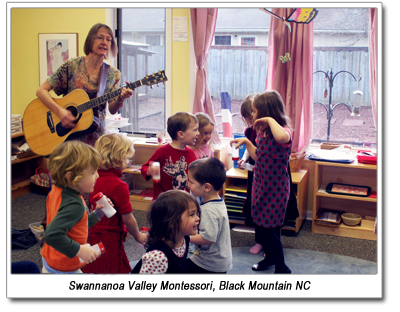 Tap-n-Shake provides a framework which is easy for teachers to implement within a classroom setting, and requires no musical training. This interactive framework becomes a routine which the children can understand and anticipate. Music time becomes so much fun! Such interactive music encourages participation and movement and inspires the child to focus on the rhythm. The ideal situation is to provide children with six-inch rhythm sticks, and identical four-inch cylinder shakers, so that everyone has the same safe instrument at the same time, and can focus on the beat of the music in a group setting. Children enjoy tapping rhymes, and look forward to tapping and reciting the rhymes they have learned. Children enjoy using shakers to show how a song changes tempo from fast to slow, and they love to jump and stomp! While they are moving to the music, they are experiencing rhythm in their bodies. And they will all eagerly await the soothing lullaby at the end of music time.
Tap-n-Shake provides a framework which is easy for teachers to implement within a classroom setting, and requires no musical training. This interactive framework becomes a routine which the children can understand and anticipate. Music time becomes so much fun! Such interactive music encourages participation and movement and inspires the child to focus on the rhythm. The ideal situation is to provide children with six-inch rhythm sticks, and identical four-inch cylinder shakers, so that everyone has the same safe instrument at the same time, and can focus on the beat of the music in a group setting. Children enjoy tapping rhymes, and look forward to tapping and reciting the rhymes they have learned. Children enjoy using shakers to show how a song changes tempo from fast to slow, and they love to jump and stomp! While they are moving to the music, they are experiencing rhythm in their bodies. And they will all eagerly await the soothing lullaby at the end of music time.
“All my children love the program. I have a child who never participates in anything, and he will participate in this.” Merinda Cutshaw, Asheville Country Day School
Benefits of Using Rhythm Training With Young Children
Rhythm training follows current research.
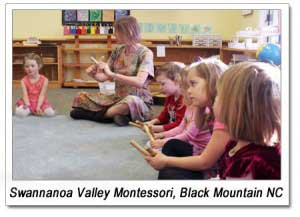
Researchers urge us to include music education during early childhood. Musical activities focus on rhythm, coordination, gross motor skills, language development, social interaction and self- expression, all of which promote school readiness and emotional growth. Using movement and music together can enhance all areas of early development. Rhythm sticks can become a multi-sensory tool, utilizing both sides of the brain simultaneously! Shakers give children the opportunity to experience rhythm, tempo, and dynamics.
Rhythm training increases early literacy and reasoning skills.
Researches tell us that engaging in rhythmic activities at an early age enhances 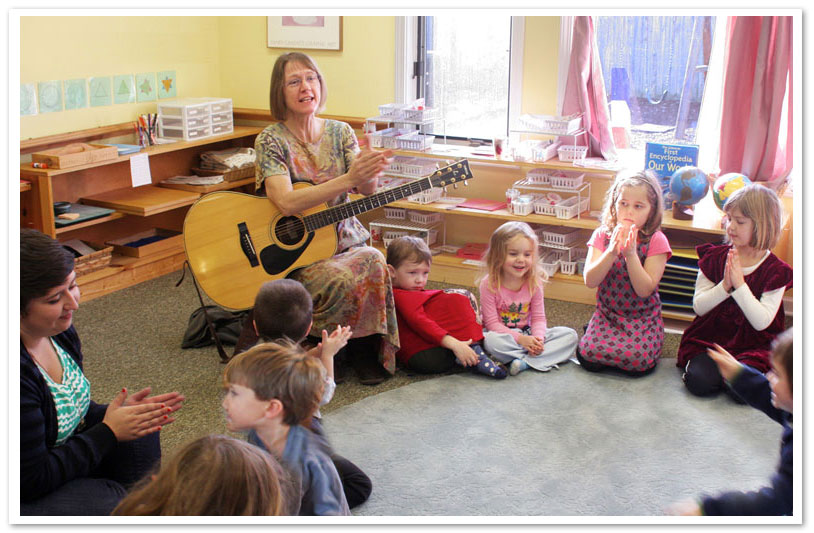 language development and math ability. Singing, listening to music, and moving to music are all rhythmic activities that promote early brain development, thus preparing children for academics. This is true because reading and math are rhythmic. Rhythm is all around us. Children first understand rhythm through movement. A child experiences rhythm in his body before he experiences rhythm in his mind. Preschoolers are probably not learning if they are not moving. Clapping and playing instruments to a beat instills internal rhythm in children, so they become aware of the rhythm within them. Rhythm training teaches early literacy as children tap out rhymes, rhythms, and even syllables. Rhythm training teaches math as children tap or shake patterns.
language development and math ability. Singing, listening to music, and moving to music are all rhythmic activities that promote early brain development, thus preparing children for academics. This is true because reading and math are rhythmic. Rhythm is all around us. Children first understand rhythm through movement. A child experiences rhythm in his body before he experiences rhythm in his mind. Preschoolers are probably not learning if they are not moving. Clapping and playing instruments to a beat instills internal rhythm in children, so they become aware of the rhythm within them. Rhythm training teaches early literacy as children tap out rhymes, rhythms, and even syllables. Rhythm training teaches math as children tap or shake patterns.
Rhythm training provides an ideal opportunity for socialization skills.
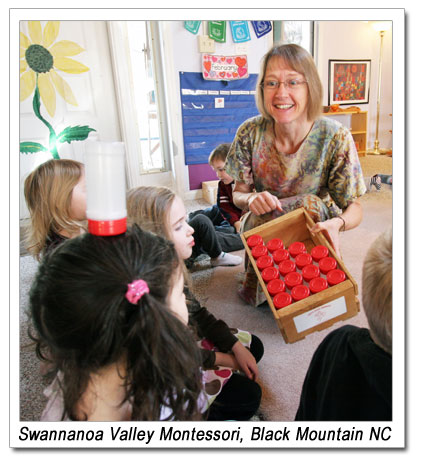
These are skills which teach cooperation in a group setting. Children are learning to use manners while waiting for one another, and while waiting to receive and return instruments. They are developing spatial awareness of those around them during guided movement songs. This includes lots of physical activity, as children are jumping, stomping, dancing and swaying to the rhythm of the music. Children are also developing coordination and balance.
“Sonia is the best music teacher I have ever had over 20 years of operating my center.” Isabel Taylor, Bell’s School for People Under Six
“Sonia Brooks’ presence at our school has been an invaluable resource. The children look forward to music each week, and go home singing the songs they learn in class. Sonia combines rhyming, rhythm and music that goes hand in hand with our curriculum. She works well with all the teachers, and has a deep connection with the students. Her energy is boundless, as well as her love for the children and the music she shares. I can’t say enough about her contribution to our school. Sonia is definitely a treasure!” LuAnn Wilks, Swannanoa Valley Montessori Preschool and Elementary School
